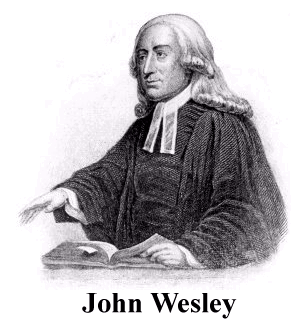METHODIST ANNIVERSARIES
This year brings two anniversaries in the
Methodist Church. In 1857 was the first assembly of the United Methodist Free
Churches and in 1907 the United Methodist Church came about. Looking back at the
history of Methodism it would appear that quite early on in t he
Church’s life there was, to coin a phrase, a lot of ‘falling out’. John
Wesley died in 1791 and six years later a Wesleyan minister, Alexander Kilham
formed the Methodist New Connexion. Some ten years later the Primitive
Methodists were formed under the leadership of Hugh Bourne and William Clowes
and five years after that a group called The Bible Christians was formed in the
West Country. Things were quiet for a while but in 1827 the Protestant
Methodists were formed in Leeds and nine years after that the Wesleyan Methodist
Association was formed. Finally in 1849, little more than half a century after
John Wesley’s death, came the final disruption when a group called the
Wesleyan Reformers split off in an attempt to reform Wesleyan Methodists. They
were not successful in this aim and in 1857 they joined forces with the
Protestant Methodists and the Wesleyan Methodist Association to become the
United Methodist Free Churches and it is the one hundred and fiftieth
anniversary of their first assembly this year.
he
Church’s life there was, to coin a phrase, a lot of ‘falling out’. John
Wesley died in 1791 and six years later a Wesleyan minister, Alexander Kilham
formed the Methodist New Connexion. Some ten years later the Primitive
Methodists were formed under the leadership of Hugh Bourne and William Clowes
and five years after that a group called The Bible Christians was formed in the
West Country. Things were quiet for a while but in 1827 the Protestant
Methodists were formed in Leeds and nine years after that the Wesleyan Methodist
Association was formed. Finally in 1849, little more than half a century after
John Wesley’s death, came the final disruption when a group called the
Wesleyan Reformers split off in an attempt to reform Wesleyan Methodists. They
were not successful in this aim and in 1857 they joined forces with the
Protestant Methodists and the Wesleyan Methodist Association to become the
United Methodist Free Churches and it is the one hundred and fiftieth
anniversary of their first assembly this year.
Fifty years later, in 1907 there was a merging of
the above with the Methodist New Connexion and the Bible Christians to form the
United Methodist Church and this year is the hundredth anniversary.
In 1932 the final union took place of the United
Methodist Church, the Primitive Methodist Church and the Wesleyan Methodist
Church but as we know later there were further divisions giving rise to
independent Methodist churches and the Salvation Army.
For students of the history of our church it must
be very easy to get bogged down in all the changes and differences. I know that
it is not easy for the genealogist. I recall searching for my late husband’s
Methodist roots in Derbyshire and discovering that at one time, in the
relatively small town of Ilkeston there were chapels of at least six different
varieties of Methodism! Interestingly, by a hundred years later they had
returned to worshipping in the Church of England. Looking back at all these
upheavals, I can’t help wondering what John Wesley would have thought of it
all. Would he have perceived his followers as an argumentative, opinionated
crowd or would he have seen the divisions as the sign of growing pains of a
vibrant and vigorous church. I rather think the latter!
Barbara Hothersall
 he
Church’s life there was, to coin a phrase, a lot of ‘falling out’. John
Wesley died in 1791 and six years later a Wesleyan minister, Alexander Kilham
formed the Methodist New Connexion. Some ten years later the Primitive
Methodists were formed under the leadership of Hugh Bourne and William Clowes
and five years after that a group called The Bible Christians was formed in the
West Country. Things were quiet for a while but in 1827 the Protestant
Methodists were formed in Leeds and nine years after that the Wesleyan Methodist
Association was formed. Finally in 1849, little more than half a century after
John Wesley’s death, came the final disruption when a group called the
Wesleyan Reformers split off in an attempt to reform Wesleyan Methodists. They
were not successful in this aim and in 1857 they joined forces with the
Protestant Methodists and the Wesleyan Methodist Association to become the
United Methodist Free Churches and it is the one hundred and fiftieth
anniversary of their first assembly this year.
he
Church’s life there was, to coin a phrase, a lot of ‘falling out’. John
Wesley died in 1791 and six years later a Wesleyan minister, Alexander Kilham
formed the Methodist New Connexion. Some ten years later the Primitive
Methodists were formed under the leadership of Hugh Bourne and William Clowes
and five years after that a group called The Bible Christians was formed in the
West Country. Things were quiet for a while but in 1827 the Protestant
Methodists were formed in Leeds and nine years after that the Wesleyan Methodist
Association was formed. Finally in 1849, little more than half a century after
John Wesley’s death, came the final disruption when a group called the
Wesleyan Reformers split off in an attempt to reform Wesleyan Methodists. They
were not successful in this aim and in 1857 they joined forces with the
Protestant Methodists and the Wesleyan Methodist Association to become the
United Methodist Free Churches and it is the one hundred and fiftieth
anniversary of their first assembly this year.